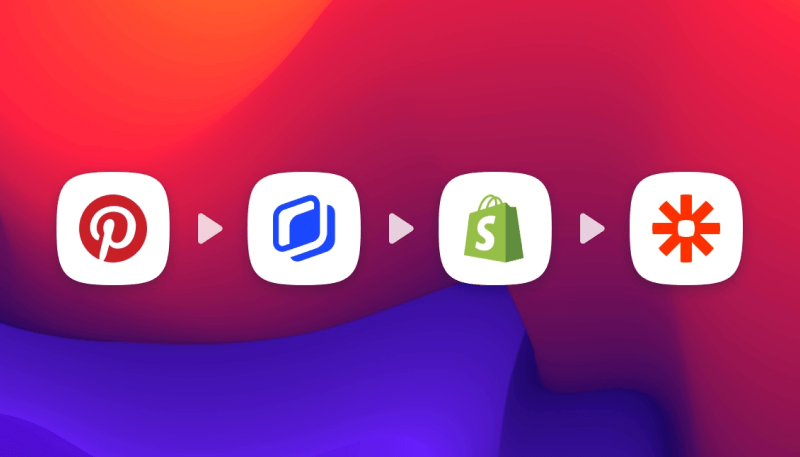How to generate a custom shipping label for your Shopify store
How to generate a custom shipping label for your Shopify store
.webp)
Tutorial: generate a custom shipping label for your Shopify store.
What could be more exciting than the unboxing of a package you've been waiting several days to receive? It's often an emotional moment that consumers remember for a long time.
As an e-tailer, this is your chance to make a lasting impression with your branding. And what better way to do this than with an original shipping label featuring your logo? At a glance, the consumer understands that the parcel contains his long-awaited order.
In this tutorial, we'll show you step by step how to automatically generate a personalized shipping label for your Shopify store..
Creating your Abyssale template
First of all, you need to create a template that will serve as the basis for your Abyssale label. This is your chance to let your creativity run free, while making sure that all the important information for the carrier is clearly visible.
Go to Abyssale and create a new template from Scratch. For our example, we've opted for a 970 x 651 px format. This is ideal for 10x15 cm labels.
On your label, let your imagination run wild to leave a lasting impression on your customer. Here's what our template looks like:
.png)
While it's important to leave a lasting impression on the consumer's mind, don't forget the most important thing: your parcel must arrive at its destination.
To this end, set aside an area (the area on the left in our example) listing all the information needed for delivery in a clear manner.
On your template, provide a text zone for :
- the recipient's name → recipient_fullname
- recipient's street → street_address
- city and zip code → city_and_zip_code
- country → country
- shipping date → ship_date
- package weight → weight
- parcel tracking number → tracking_number
Also add a QR code that will allow you to retrieve the parcel tracking number with a simple scan. This is necessary for delivery companies.
Create an Airtable
Before we can automate anything, we need a database from which we'll retrieve the information provided by the customer when ordering. We'll then use this information to create the shipping label from Abyssale.
Incorporating 3PL ecommerce fulfillment services can further streamline your order processing and shipping operations. These third-party logistics providers handle inventory storage, order picking, packing, and shipping on your behalf, allowing you to focus on other aspects of your business. Integrating a 3PL service with your Shopify store can automate the fulfillment process, reduce shipping times, and improve customer satisfaction.
Here are the columns that should make up your Airtable table:
- The order number = order number.
- Recipient's fullname = recipient's name
- Address = Street Address.
- City and ZIP code = City and ZIP code
- Country = Country.
- Shipping date = Ship date
- Package weight = Weight
- Package tracking number = Tracking number
- Add a last column to show the shipping label url = Shipping label.
To simplify understanding of this tutorial, we've only mentioned the variables essential to the creation of the shipping label. However, you can add more if it helps you track orders.
You're now ready to automate the creation of your mailing label.
Create a new Make scenario (Intergomat)
At this stage, you have a template for your shipping label and a database from which to retrieve your customers' delivery information. These will then be used to create the shipping label from Abyssale.
Start by sending the delivery information provided by the customer when ordering, to your Airtable.
To do this, create a new Make scenario. For the trigger module, select Shopify "New Event". A Webhook will allow you to connect Make to your Shopify store.
Once this is done, create a new Shopify "Get an order" module. In the Order ID line, add the [Object ID] variable from the Shopify "New Event" module.
Now add a new Airtable module "Create a record " and connect the Airtable table you created earlier.
Fill in the rows with the corresponding variables. In our example, this is what it looks like:
.png)
You've just automated the transfer of delivery information provided by your customer to your Airtable database. This automation will be triggered as soon as you update an order from your Shopify dashboard.
However, we'd like to go one step further and automate the creation of the shipping label from this new database.
To do this, add a new module to this scenario: Abyssale "Generate Single Image". Then connect the template created earlier.
You need to fill each line with the appropriate Airtable "create an order" module variable.
For our example, this is what it looks like:
- Element: recipient_name - payload = [recipient's fullname]
- Element: Street_address - payload = [street address]
- Element: Country - payload = [country]
- Element: City_and_zip_code - payload = [City and ZIP code]
- Element: Ship_date - payload = [Ship_date]
- Element: Weight - payload = [Weight]
- Element: Tracking_number - payload = [Tracking number]
- Element : tb-qrcode_0 - payload = [Tracking number]
You've almost completed your automation. There's just one more module to add.
- *Add one last Airtable "Record Update" module ** Fill in the data lines as follows:
- Record ID = [ID] (from the Airtable "Create a Record" module)
.png)
- Shipping label = [File : File url] (from the Abyssale "Generate Single Image" module)]
.png)
Your automation is ready! Now all you have to do is test it. As soon as a new order appears on your Shopify dashboard, add the tracking number provided by your carrier and **change the order status to "processed".
Here's what it looks like in our example (this is a simulation, so we've entered a fictitious tracking number). In addition, scheduling on Make is "OFF" because this is a test. Once the test has been validated, you can switch the scheduling to "ON") :
If you scan the QR code with your cell phone, you'll see the package tracking number.
Now you're ready to create customized shipping labels for your personalized store.
If you'd like to keep up to date with the latest Abyssale news and discover clever new automations of visual creation, follow us on LinkedIn.
Get started for free
Master Abyssale’s spreadsheet
Explore our guides and tutorials to unlock the full potential of Abyssale's spreadsheet feature for scaled content production.

Marketing Automation for Agencies to Scale Client Workflows (+ Top 12 tools)




